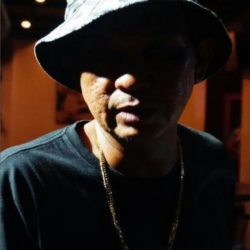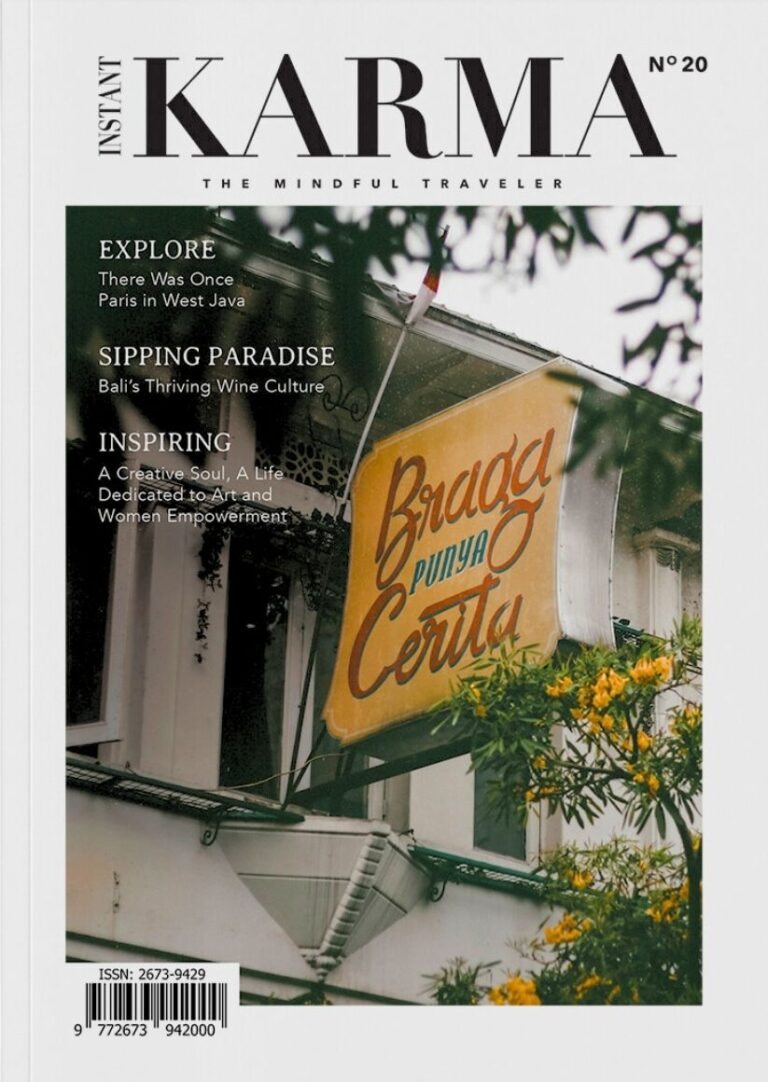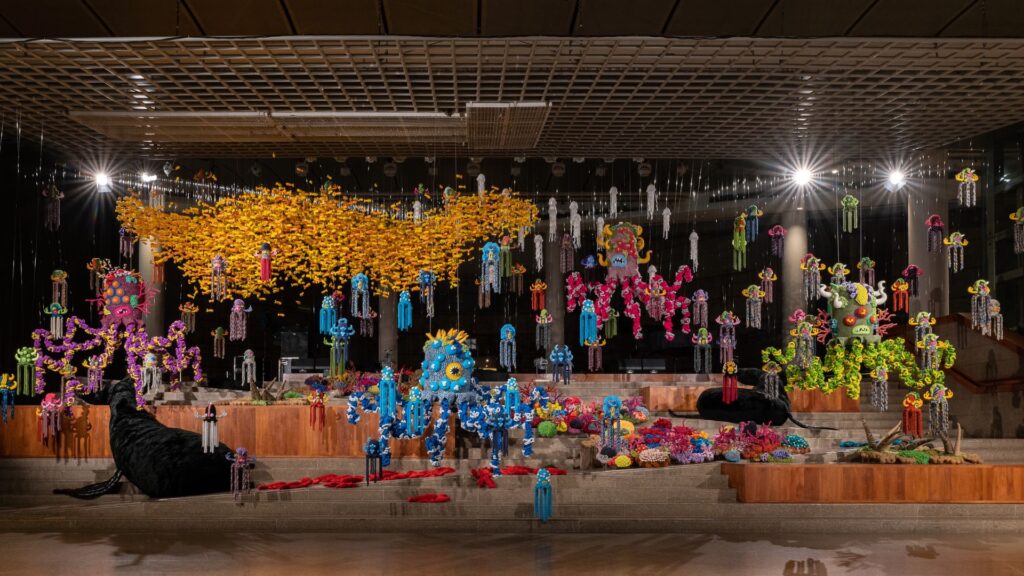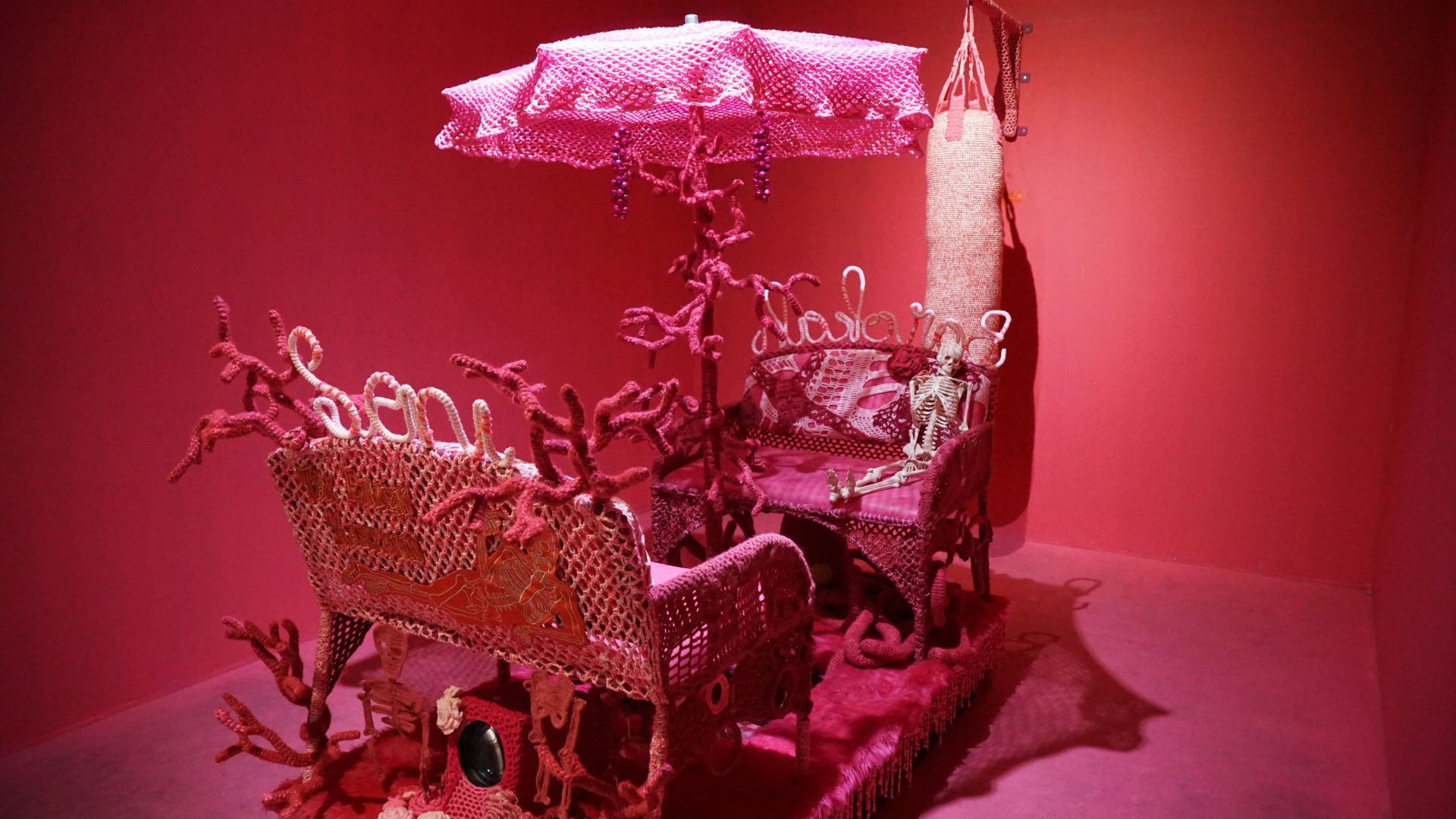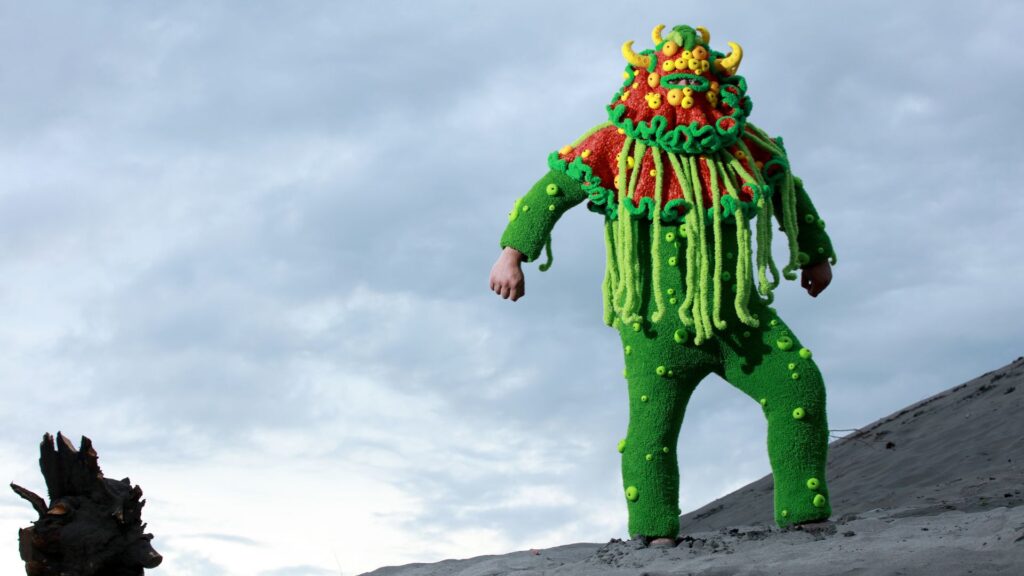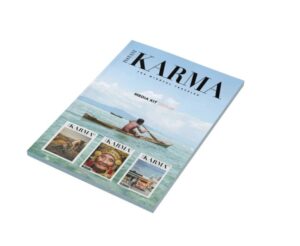Mulyana, or commonly called Mang Moel, is a contemporary knitting installation artist using repurposed yarn.
The Bandung-born artist has managed to transform leftover yarn from factories into beautiful and meaningful works of art. He was inspired to use leftover materials because he wanted to reduce waste and create unique and interesting artworks. He collects leftover yarn from factories around Bandung then knits the leftover yarn into various shapes, such as flowers, animals, and plants.
One of his famous knitting installations is a piece titled “Forgotten Beauty”. This work is made from leftover yarn of various colors assembled into a giant flower. This work depicts the forgotten beauty, such as the beauty of nature that is increasingly threatened by environmental damage.
His artworks have proven that waste can become something valuable and meaningful. For more on his artistry, we had a chat with Mang Moel.
Mang Moel, when did you start working on this recycled and upcycled yarn-based installation art?
Actually, I started making knitted works when I was in college in Bandung. I studied at the Fine Arts Education Department of the Indonesian Education University in Bandung, so design and craft methods were one of the materials I learned at the campus. But I started knitting on my own when I was hanging out with friends at Tobucil (Small Bookstore) in Bandung. Between 2006-2008. I started to enjoy knitting.
In 2009, I had my first solo exhibition, a small exhibition in an alternative space around the campus. At that time, I started using fabrics, threads, and materials from the textile factories in Bandung. The works that appeared that year did not use knitting techniques much; I still used the pompom technique using yarn to make small modules that were arranged into several monster shapes.
Can you walk us through the process of making one of Mang Moel’s knitted yarn installations?
Maybe I’m one of those artists who rarely use a preliminary design to create a work—it seems that all the concepts and ideas are in my head (laughs). So usually I’m accompanied by several colleagues in the studio to brainstorm ideas first before executing the work. After I have an idea, I doodle it on my iPad and then share it with the production team in the studio.
Thank God there is now a team that helps in the studio; in the early years of making installation works I still did it myself, and after the exhibition was done I immediately became sick (Laughing).
Can you tell us how you can participate in the exhibition there?
Most of the exhibitions that I participated in both at home and abroad were by invitation. So as an artist, I was invited directly by either the gallery as an institution or the exhibition curator personally to participate in various programs.
One of your iconic works is MOGUS, an installation art in the form of the Sigarantang Octopus Monster.
Is there a story behind the making of this iconic work?
MOGUS is an acronym for Monster Octopus Sigarantang (siga = like, rantang = stacked food tray) because its initial shape is stacked like a classic food tray made of enamel. The choice of the octopus shape is because the animal has many hands, and I feel that what I do will be finished faster if I have many hands (laughs).
MOGUS is actually my alter ego, and MOGUS can be whatever I want, it can be a man, it can be a woman, it can have many eyes, it can be many colors. Anyway it can be free to be anything.
Do you have any messages or advice for young artists who are also involved in recycle and upcycle installation art from any materials?
What is clear is that we should never stop exploring. If it is difficult to make works from recycled materials, at least we try to minimize the impact of the process of making the works we do.
Check out his Instagram:

